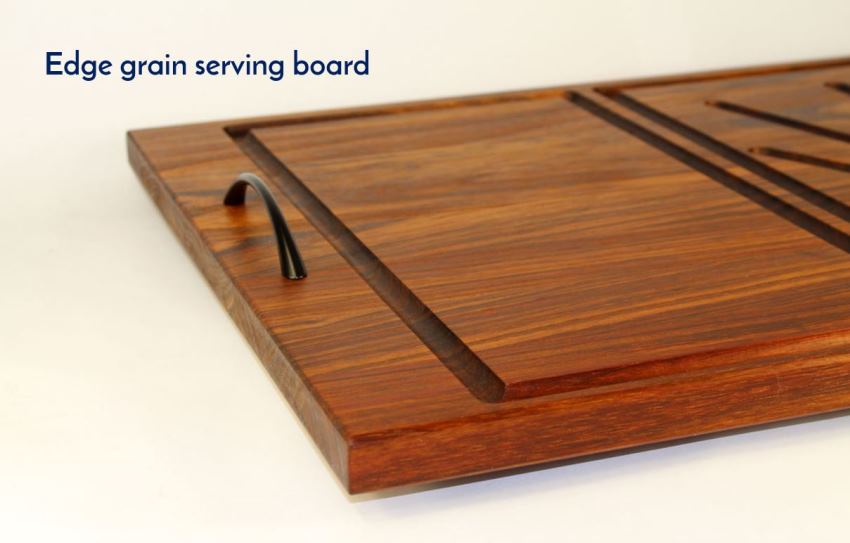End grain vs Edge grain
The big choice in cutting boards is whether to use an end grain or an edge grain board. Let’s explain the difference.
Edge grain design
Edge grain is used in serving boards and others which are not subject to heavy cutting. Edge grain is where the wood fibres run along the length of the board. The end of the grain is visible on the ends of the board.
Edge grain is very visually appealing but it is not suitable for heavy duty cutting boards in the kitchen. As the knife completes its stroke, it will contact the surface of the board. It continues to cut through the wood fibres of the edge grain. With the natural tensions in the wood fibre released, the fibres will shrink away slightly from the cut mark. You now have a permanent blemish on the board.
Edge grain boards can be made nice and thin as they are very strong. Serving boards need to be light, so thin is good.
End grain design
The wood fibres on an end grain cutting board run vertically. The top surface of the board is essentially the ends of a whole lot of pieces of wood.
An end grain cutting board reacts quite differently to a knife cut. As the blade contacts the board, the fibres are able to open up to accept the knife’s travel. As the knife withdraws, the fibre close up again. The fibres do not get cut by the blade, so very little damage is done to surface.
Very importantly, as the fibres in end grain do not get cut, they do not do any damage to the blade edge. Your knife will remain sharper for much longer.
End grain boards are much thicker than edge grain (40mmm or more) to provide extra strength, The additional weight contributes to the cutting board sitting solidly on the work surface.


